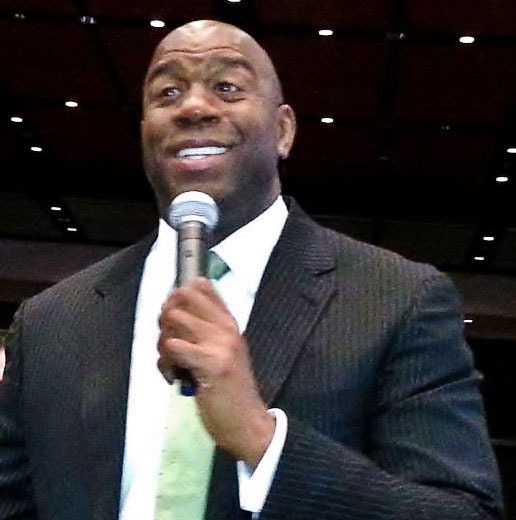One of the highlights for me at the recent 27th IHI Forum in Orlando was the opportunity to see Magic Johnson and to hear him speak. Magic Johnson is one huge man. More impressive than his size-15 feet or his massive shoulders is the breadth and the warmth of his smile. I will admit that I was drawn more to see what remains of this NBA Hall of Famer than to hear his message. I was not sure what he would have to say that would add to my understanding of the issues that face healthcare. I was vaguely aware of his HIV/AIDS activism. I knew that after his NBA days he had become a very successful businessman who owned a wide spectrum of businesses in distressed neighborhoods across the country, and had turned some of his vast wealth into a foundation, but isn’t that what all super-rich former athletes do?
From the moment I saw his yard-wide smile and heard the enthusiasm in his voice as he eloquently described his commitment to improving the poorest communities in urban and rural America, I was sure that I had much to learn from Magic Johnson, so I dropped my skepticism and just enjoyed listening to him. He did not talk at all about his famous college and NBA career. He defined his purpose as the community work and the HIV/AIDS work that fill his time after arising each morning at 4:15 to meditate, stretch and work out for two hours before beginning his day.
His description of how he learned he had HIV infection and what he did to put his life back together was a stunning example of an emotional journey from disaster to triumph. His first response was to go to his wife. He learned on the advice of a physician that cared enough to challenge him that he must work to “get his smile back”. He followed instructions and took a difficult regimen of fifteen meds three times a day that is now, through science, reduced to three pills a day. He considered himself blessed, recognizing that his wealth and fame gave him access to care that everyone deserved and he is resolved to do what he can to make sure that even the poorest members of the community get it. He is brimming with gratitude and joy that he is alive and well, living with a chronic health problem. He proudly boasts that he is in good health 24 years after his diagnosis.
Perhaps most impressive is that Magic Johnson is an enormously successful businessman who has used his businesses to improve the jobs, education and housing opportunities of minorities in the city. He understands the origins of healthcare disparities and he is constantly devoting his strategic competence to doing what he can to correct those realities.
If his presentation was eloquent and clean of any attempt to inflate who he is, his ability to conduct a Q & A that treated every question with deep thought and produced amazing answers while elevating the questioner to his height, was even more amazing. The man has the complete package of IQ, EQ and CQ. His skill is the result of hundreds if not thousands of meetings with community groups, schools, colleges and churches as well as medical institutions and business groups as he pursues his mission. He lovingly turned the tables on those who asked questions. Through the questions that he asked of those who asked him questions, he revealed a mastery of the art of engagement. He could teach clinicians a lot about finding out “What matters to you?”.
As I reflect now several weeks after my experience with Magic in the Magic Kingdom and seeing for myself the magic that seems to be a part of everything that Magic Johnson is, it occurs to me that he is a living example of a person who was transformed by learning that he had a chronic disease. That transformation includes becoming a Hall of Famer in the highly complicated task of being an engaged patient. Magic’s engagement does not end with himself but rather is also a bridge to community engagement in improving the health of the community. Just as his play in the NBA encouraged many young children to go to the playground and practice their dribbling, passing and shooting so should his engagement with his own chronic disease and with the community encourage others to follow his example.
We should all take Magic’s example of individual patient engagement and community involvement to heart if our goal is the Triple Aim in its new elegantly restated form. I believe that the only way we will ever achieve this lofty goal is through patient and community engagement in the pursuit of “Care better than we have ever seen, health better than we have ever known, cost we can all afford, …for every person, every time”.
Magic is leading the way to Triple Aim engagement.


